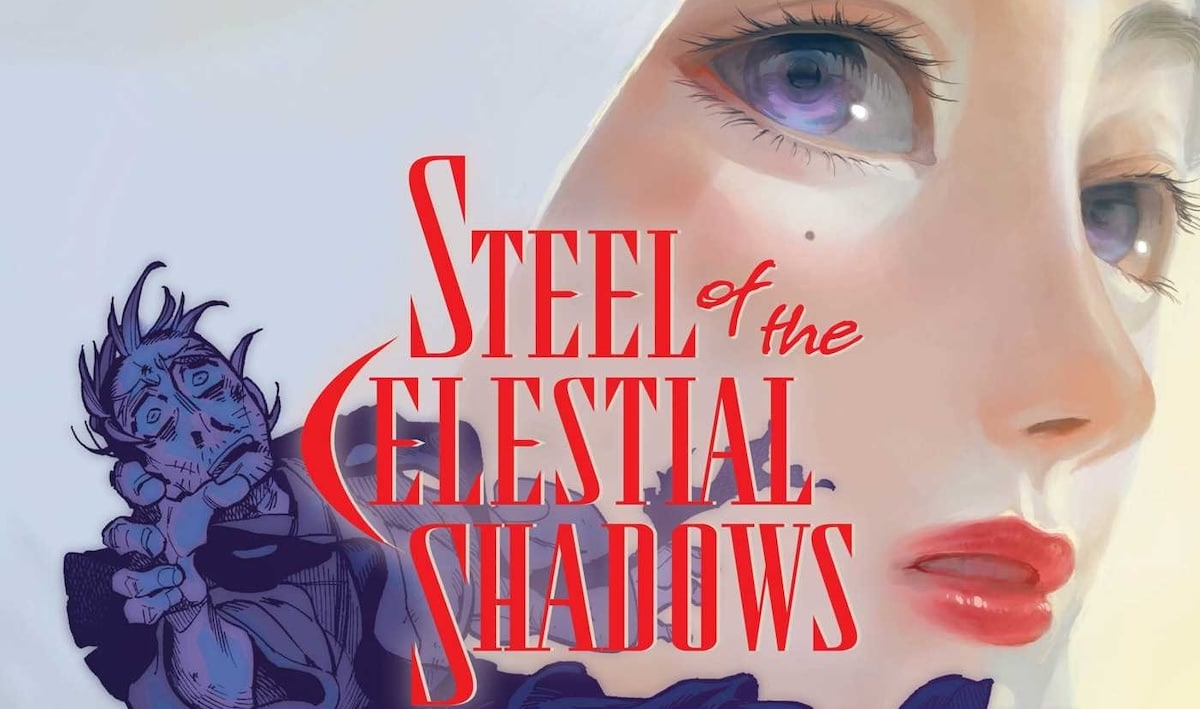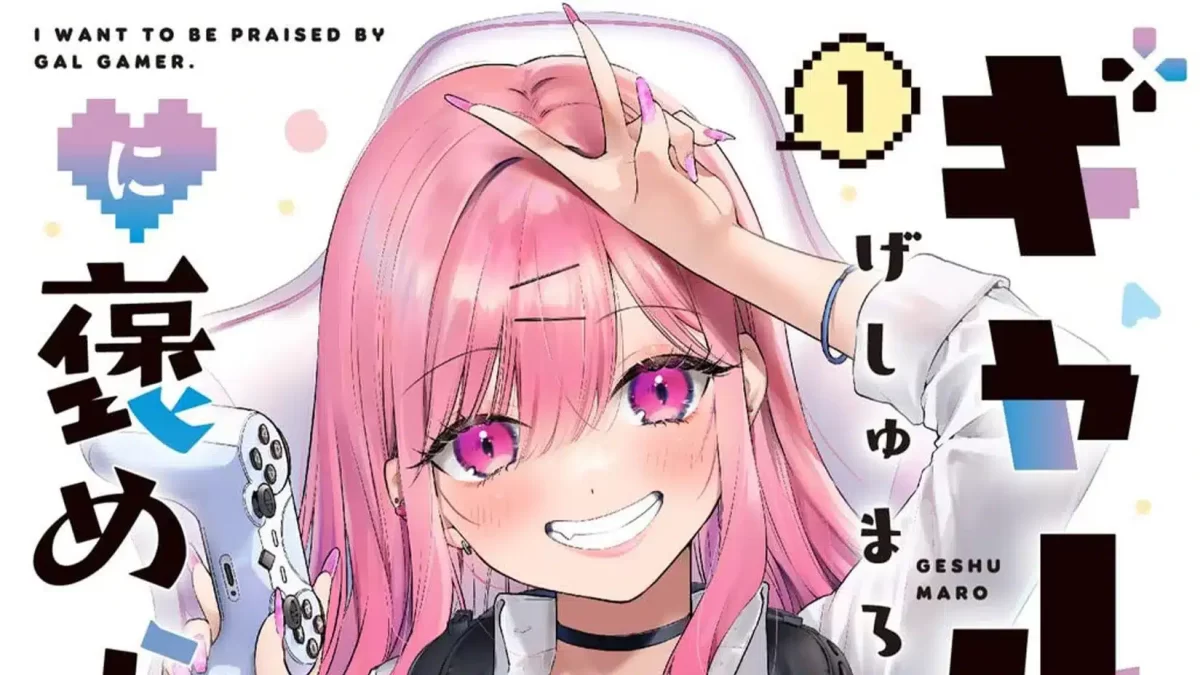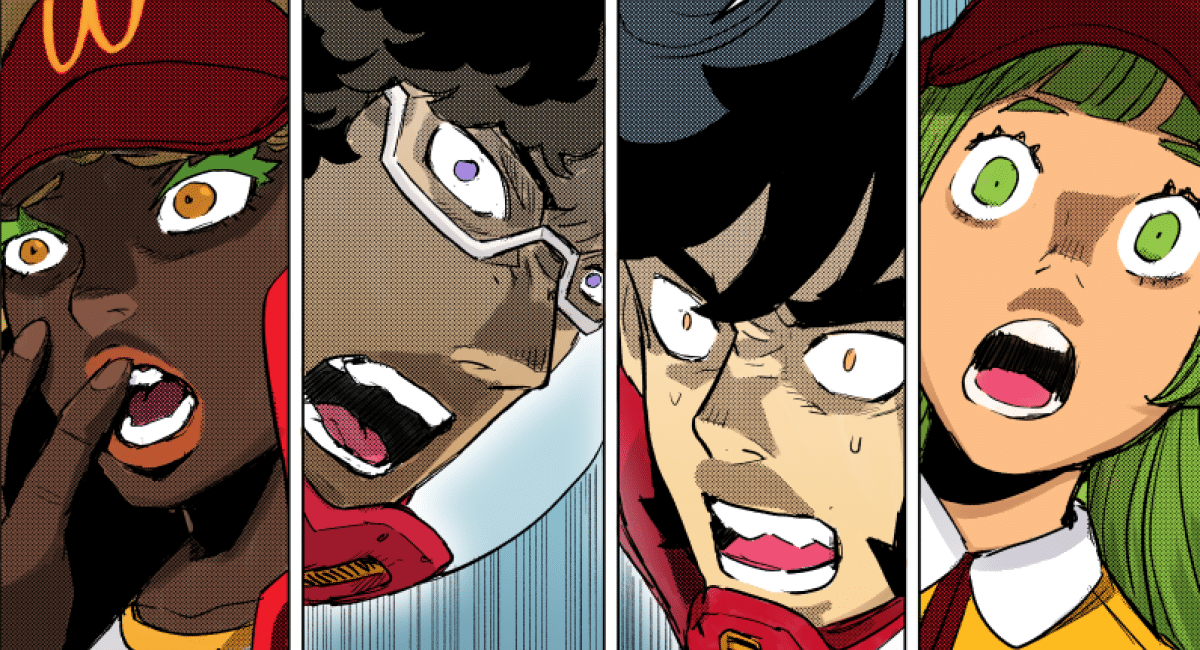The Twin Knights is the third entry in the Study Guide series, casual lesson plans written for teachers in the unexpected COVID-19 classrooms of 2020.
 The Twin Knights
The Twin Knights
Written and illustrated by Osamu Tezuka
Translated by Maya Rosewood
Vertical edition production by Grace Lu, Tomoe Tsutsumi, and Anthony Quintessenza
Published by Vertical , Inc.
Statement of Intent
The story starts off as something familiar: the king and queen have twins, and the prince is stolen and abandoned in the woods. Instead of saving the prince, Princess Violetta must become him, and then save him! The Twin Knights is full of familiar smiles, swashbuckling adventure and Osamu Tezuka’s freewheeling sense of humor, but it uses the story’s trading of roles to undo the typical fairy tale ending. Twin Knights provides a chance to look at gender roles and at history, to start conversations between you and your students that can range from “why would it be groundbreaking to have a story where a girl would rather be in a swordfight than be a princess” to “find Japan on a map,” depending on what your classroom needs. In this lesson plan, you will find prompts to react to while reading the book, prompts addressing the mechanics of how the book is made, and further activities for other students in the house who aren’t following the book itself. It is my hope that you can use this Guide to engage your students’ interests, to find what speaks to them in Twin Knights and explore that, rather than ensuring every question is answered or page is read, so modulate what you see to suit your students’ needs.
Pre-Reading Discussion
Who has read comics? Comics work by reading them panel to panel the same way you’d read a chapter paragraph by paragraph and sentence by sentence. Well, manga is read the same way that everyone is (hopefully) familiar with from other comics, but the direction goes from right to left instead of left to right, starting from what would be considered the last page in another book and ending on the first. If talking about it makes it seem daunting, give it a shot and find out how natural it is. Who knows any fairy tales? This sure looks like a fairy tale. Who is familiar with Osamu Tezuka? You will be soon!
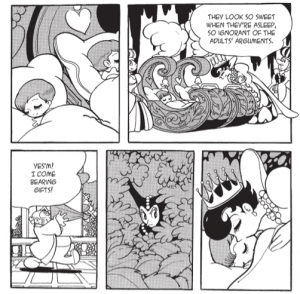
I have divided the book into three parts, with each Act named for the character who plays its hero: Papi, Emerald, and Knight Ribbon. You can follow this model and react as you read, you can put it all together and let the student finish it at their own pace, or feel free to simply pick activities that engage you and your audience.
Papi – Scenes 1-6
- Prince Daisy is left in the woods and raised by Papi the deer, who makes a secret bargain with the forest to turn into a human at night. As Daisy grows up, he becomes fixated with killing the deer that he doesn’t know is his surrogate mother. Is this out of character for a children’s story? What about a fairy tale?
- Princess Violetta has to pose as both the princess and the prince so that no one knows of Daisy’s disappearance. Violetta is happy to have the freedom to do what boys do. Why don’t the royal family change the laws so that people can do what they want without being restricted by gender?
Art Where does Osamu Tezuka’s style suit the story and where is it at odds with the mood? Should it be silly, or serious? Don’t you think it’s a little of both?
Accommodations This part of the book focuses on pretending to be something that is a difficult burden to bear alone, as well as pretending to be something you aren’t and finding out you like it. Create activities that have your students think about or experience expectations, responsibility, playing pretend.
Emerald – Scenes 7-13
- Violetta becomes Knight Ribbon. Emerald the Gypsy Queen falls in love with Knight Ribbon while they search for Daisy. The Duke uses Daisy (who is back in the castle but no one knows he is the prince, including Daisy) to stand in for the missing Princess Violetta when she was pretending to be the prince. Gender isn’t concrete; it’s flexible and what we make of it. Discuss.
- Emerald is Roma, not a “gypsy.” Gypsy a word that has hurtful connotations and people who identify as Romani have a complicated history with it, similar to people of the First Nations and the word “Indian.” Emerald is all of the stereotypical things gypsies are: nomad, performer, and trickster who answers to no man, and yet she puts her strengths to use as a helpful and versatile friend to Princess Violetta‘s male alter ego, Knight Ribbon. It’s her magic and theatricality that saves the day on several occasions. Can you think of other groups who have a hard time finding fair and positive portrayals of themselves in the media?
Art Costumes! The outfits of Twin Knights are flamboyant, ornate, and look closer to antiquity than vintage. How accurate are they? If you see this as a chance to spend a day looking at fashion and saying it’s for educational purposes, please do.
Accommodations This part of the book focuses on people determining their own identity, and how telling the truth isn’t always easy. Create activities that have your students think about or experience roles that you can claim as your own and ones that you can’t.
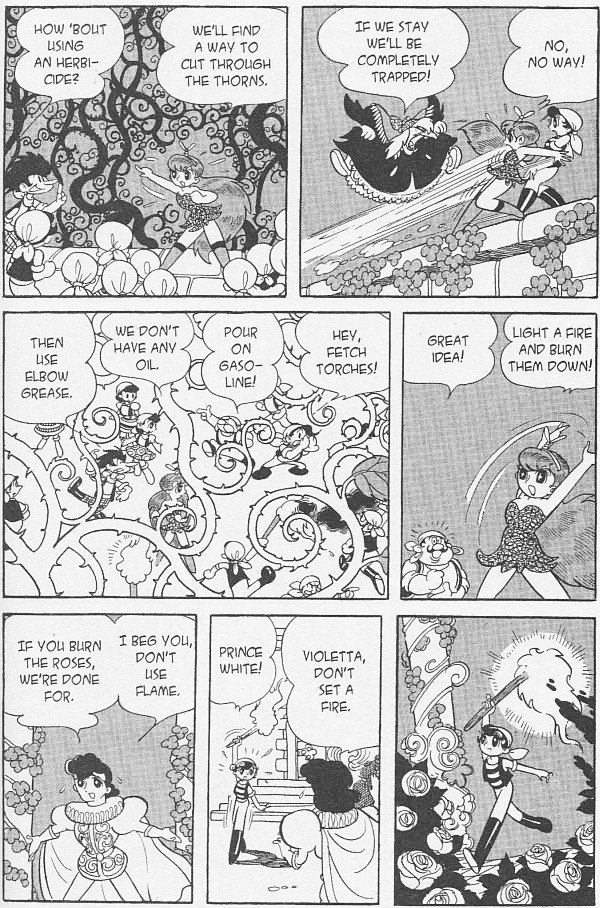
- When magic calls for a sacrifice, the wolf mother gives up her life for Emerald’s. What is up with the animal roles in this book??
- The ending defies and conforms to the fairy tale formula. Victory over the Prince Black results in a Happily Ever After scenario. But Knight Ribbon saves the day, giving Prince White autonomy, instead of the White giving Violetta children. Daisy becomes the king as originally intended, which also frees Violetta from the royal entrapment of baby obligation, queenship. Violetta is free to be who she wants to be and dress as she sees fit. Did Knight Ribbon live Happily Ever After?
Art Costumes again, but in a different way. There are half a dozen costume changes each for Violetta and Emerald in these three Scenes, if you count being hidden inside a giant loaf of bread as a costume change. Did they have to wait until the end of the book to have a mirrored outfit sibling swordfight between Violetta and Daisy, or could Tezuka have done it at any time? Did building up to it make it easier to follow?
Accommodations This part of the book focuses on people who are heroes because of what they do, and how being true to your life (and not your self) leads to heroism in an unjust world. Create activities that have your students think about or experience what heroes do, especially placed in context. Not all heroes wear capes.
Making Twin Knights
Prompts regarding the art, translation, and production of the book.
Art The look of Twin Knights is cartoonish and simple. Osamu Tezuka’s style evokes Walt Disney, Ub Iwerks, and Albert Uderzo (and all the culturally skewed baggage that comes with). There is an economy of line to Tezuka‘s drawings. He puts lots of detailed work into patterns and textures but never clutters the page. There are no colors in the Twin Knights, but screen tone is used to serve as a shade of grey (if you look closely, it’s just closely printed black dots) to provide color and texture to open space on the page. It serves as a frame for the action, guiding the eye to follow the art by surrounding it with shadow, a reverse spotlight.
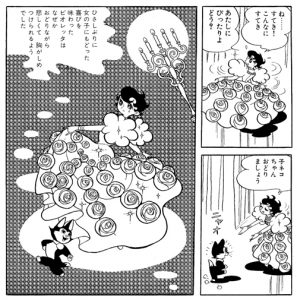
Classroom At Home
Sometimes a shelter-in-place school has people attending it who aren’t a part of the class. Here are some themes and ideas if they’d like to be included in the lessons but can’t follow the material, or if you just need something for them to do.
- Family. Talk about family members, history, and cultural heritage.
- Espionage. Twin Knights is full of dressing to deceive. Home-made spy costumes are a must. Strike a balance between encouraging sneaking around and an activity involving prolonged silence.
- Romani music. Follow the history that goes from traditional gypsy brass band musicians like Boban Marković to American chamber pop groups like Neutral Milk Hotel.
- Gender. Find modern portrayals that blur, exchange, or eliminate gender distinctions. Look at how the work of artists like Pierre et Gilles challenge the presentation of gender.
- Watch Trevor Dunn’s film version of Twelfth Night.
- One color illustrations. Like Tezuka works in monochrome, make some art with black and only one other color. You can order screen tone supplies from Deleter, or you can use markers, crayons, whatever is available around the house or on the tablet/smartphone.
- Read more comics!


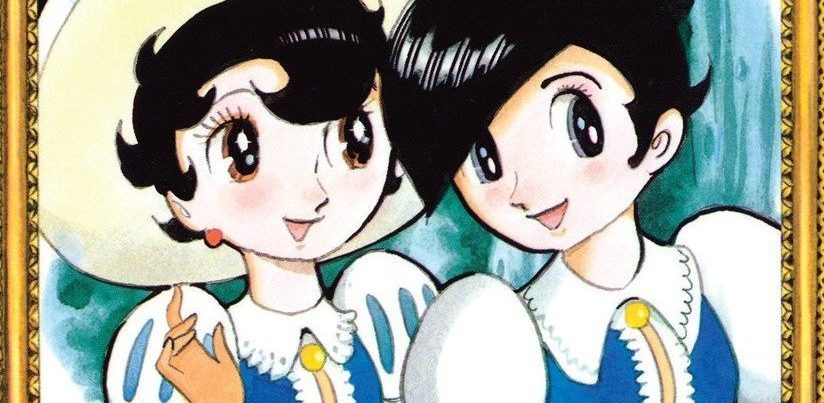
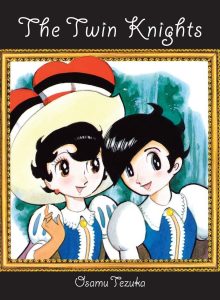 The Twin Knights
The Twin Knights